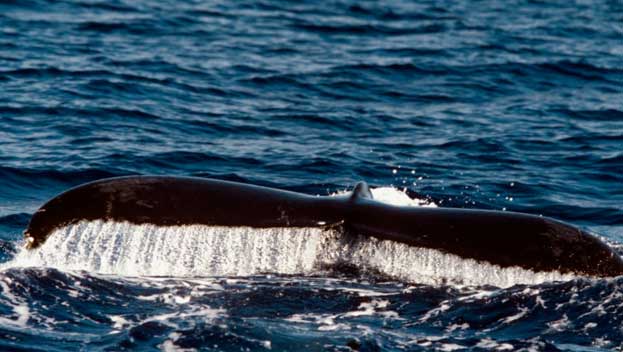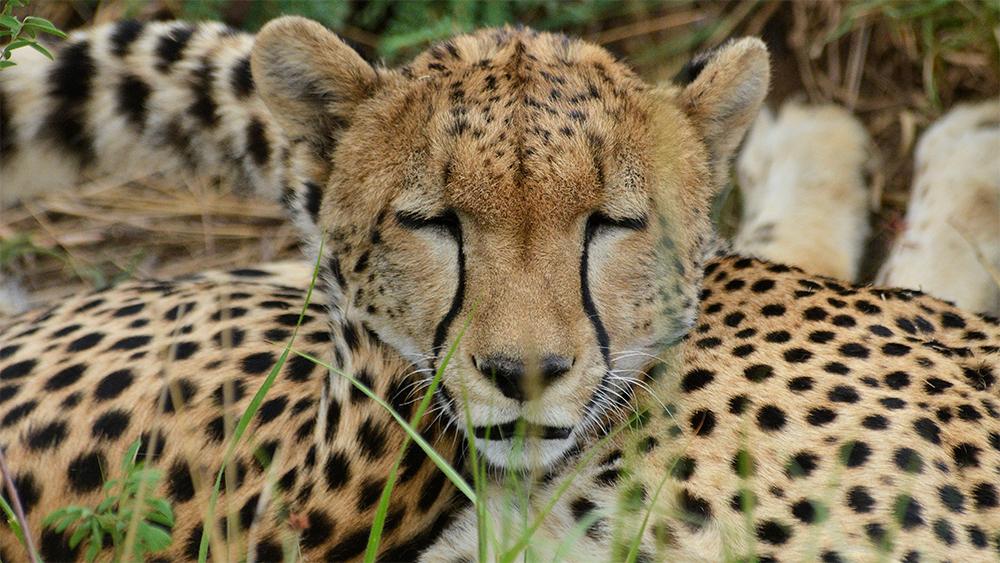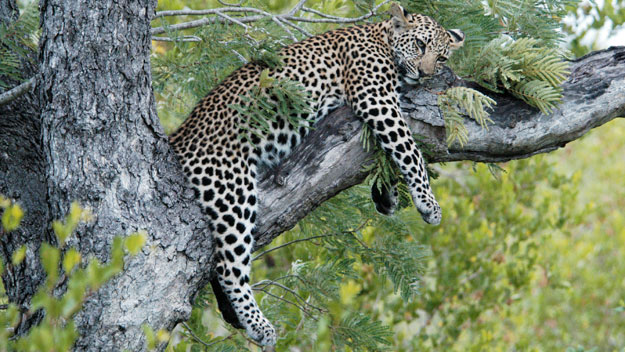Watch whales at play
It’s not often you get to see a 50-tonne whale giving itself a facial, but at Bientangs Cave – a cafe on the rocky foreshore of the seaside town of Hermanus – whale behaviour is on the menu six months a year.
Between June and December, more than 180 southern right whales swim into the great sweep of Walker Bay to calve and, on the day in question, a female decided to rub some barnacles off her snout using a rock the size of a caravan – just 20 metres offshore.
Along the seafront, signs clearly state: “Feeding of whales prohibited”, but this doesn’t stop the occasional spectator hurling a bread roll in the path of one of these leviathans.
On a good day, when the whales come to the surface to “play”, you see them breaching (propelling their bodies out of the ocean), spyhopping (raising one giant side fin) and sailing (sticking their mighty tails in the air prior to a dive). They also grunt, bellow and massage themselves with giant strands of kelp. An old fishing village, Hermanus is situated 120km east of Cape Town on the Garden Route – a landscape of ancient forests, lagoons and superb white beaches. This 400km stretch of the Western Cape is the perfect place to watch whales in style. It has some of South Africa’s chicest hotels and restaurants which, thanks to a favourable exchange rate (around four rand to one dollar), are very affordable.
Sunbake with penguins
Exploring the Garden Route has been called taking “a grand tour in great style”. First port of call – once you’ve driven to the Cape of Good Hope, past the jackass penguin colony at Boulders Beach and east along the spectacular coastline – is the aforementioned Hermanus. Hundreds of penguins gather on the beach, so many in fact that there’s very little room to spread your towel and sunbake. With its picturesque harbour, 16km of cliff-top walking paths and a whale crier who, for six months of the year, is kept busy blowing his kelp horn whenever there’s a sighting, it’s worth spending a day or two there.
Knowing where to stay is essential – on the Garden Route a room with a view over a beach often costs only a fraction more than one next to a busy highway. In the centre of Hermanus, you’ll find a little piece of Tuscany at the three-star Auberge Burgundy which, with its ochre walls and eggshell blue shutters, looks like a villa in Siena. The rooms have views over the sea or onto a garden of blue and white flowers and burbling fountains. Across the road is the Burgundy Restaurant, famous for its French brasserie-style food and among the top 40 eateries in the country.
Alternatively, perched on the cliffs is the five-star Marine hotel – one of “Africa’s most beautiful hotels”. Built in 1901, this elegant white building has large, arched windows and a magnificent outlook over the bay.
After Hermanus, you drive into the interior, through the Robinson Pass over the Attakwasberg Mountains, to the Karoo – a region of ancient wrinkled mountains, where millions of ostriches are farmed on the plains. The roads in this semi-desert are so long and straight that mirages emerge from the shimmering tarmac only to dissolve on approach.
Cuddle a cheetah
Oudtshoorn – a pleasant town with jacaranda-lined streets and fine old Dutch colonial buildings – is reminiscent of an outback Australian community. On the outskirts of town you’ll find the Cango Wildlife Ranch, where you can safely cuddle a tame cheetah. Don’t be frightened by the gravelly sound that emerges from their throats – cheetahs are the only big cats to purr and do so with a vengeance … especially when you stroke them.
Ride an Ostrich
The star attraction of the Little Karoo, however, is the ostrich. There are millions of them and fearless jockeys ride prize birds in action-packed races. Weighing in at 130kg, a mature male bird runs at 75km/h for two kilometres on the flat. Encumbered by an 80kg man or woman, they still clock up 40km/h.
People have been racing ostriches in Africa since the time of the pharaohs, when they were also ridden into battle. Today, jockeys sit in a hollow on the bird’s back and hook their legs around its meaty thighs which, incidentally, can also provide around 30kg of prime steak.
At the Safari Ostrich Show Farm, visitors can gently ride a bird under supervision, but don’t be tempted to dig your heels in or you’ll disappear over the horizon in a flurry of feathers.
On Oudtshoorn’s main street, there’s the historic Queen’s Hotel – with an elegant courtyard garden where you can dine al fresco – or you can visit the De Fijne Keuken restaurant opposite. Here, you can eat in an antique-filled interior – perfect in winter – or on the spacious wrap-around balcony in summer. The balcony is the perfect place to watch a spectacular desert sunset. Keep an eye on the sky as it slowly turns a subtle shade of indigo before the Milky Way makes a dazzling appearance overhead.
Eat a giant Oyster
The next stretch of the Garden Route is reached by driving over the Outeniqua Mountains back to the coast, where you’ll find the old port of Knysna, the beaches of Plettenberg Bay and the ancient forests of the Tsitsikamma National Park.
At Knysna, a huge shallow-water lagoon is home to 12 million oysters and, on Thesen’s Island (joined to the land by a bridge), you can visit a tavern and sample the local molluscs. Two-year-old oysters are comfortable mouthfuls, but 15-year-olds weigh 1.5kg and can easily feed a family.
Knysna has two other claims to fame: the Outeniqua Choo-Tjoe, a steam train which puffs its way along the coast; and the phenomenon of millions of litres of lagoon water pouring between Knysna Heads as the tide goes out. At Paquita’s restaurant (www.paquitas.co.za) on the East Head, you can see the rip racing by while you eat fresh fish for lunch. Don’t be tempted to swim in the turquoise, white-streaked water – during the past two years, 11 boats have sunk and seven people have drowned. Instead, take a boat to the heads from Knysna Quays.
Sing along with tree frogs
To the west of Knysna is Brenton-on-Sea, a small settlement on a headland with a hotel of the same name, overlooking one of the Garden Route’s most dramatic beaches. Here, you can hire one of the hotel’s log cabins for less than $95 a night, go on walks along an isolated beach and fall asleep to the sound of the surf.
Alternatively, 10km inland, high in the rainforest-clad hills overlooking the lagoon, there’s the 137-hectare Phantom Forest Eco-Reserve with its thatched cabins – each with a deck and small pool with a view – where you can relax and sing along with the melodious chorus of thousands tree frogs.
Forty minutes away on the other side of Cape Seal is Plettenberg Bay – or Plett as it’s known locally. It’s one of the Cape’s chicest resorts and is dominated by The Plettenberg hotel, which sits majestically at the end of a peninsula in the middle of the bay. After Bientang’s Cave and The Marine in Hermanus, this is the next best place to view whales. Sleek and surrounded on three sides by the water, The Plettenberg is like a lovely old ocean liner.
Have a lunch date with primates
Plett is only 30 minutes away from Monkeyland, a valley of 12 hectares surrounded by a six-metre fence made almost invisible by the rainforest. Inside, 16 species of primate – including gibbons, lemurs and many other endangered species – roam freely as if in the wild. Most of the monkeys keep their distance, but the lemurs, which have no fear of humans, often follow visitors around and sunbathe on the cafe fence in clear view of the diners having lunch.
Spanning the valley is a 120-metre rope and wood bridge that allows people to walk through the canopy and watch the monkeys in their own domain.
Spot a flock of rare birds
Ten minutes east of Plet is the Keurbooms River and a four-star hotel of the same name. In the style of a Spanish colonial villa, this hotel is situated on an estuary in a landscape of reeds and bulrushes, and is a popular place to spot rare migrating birds. The only sounds that disturb the tranquillity of this wilderness are the haunting calls of a heron or the occasional splash of a jumping fish.
Walk with otters
For many, the highlight of the Garden Route is the Tsitsikamma National Park ($4 entry) less than two hours drive east – a region of mountain ravines, old forests and wild flowers, and home of the last Cape elephant – an old matriarch which sadly has roamed the region for 45 years in a futile search for another herd. Along the park’s wild coastline, you’ll find the Otter Trail, named after the Cape clawless otter. It takes five days and four nights to hike and there are huts to sleep in on the way (these must be booked). For those who want a half-day adventure, you can join the trail and walk to a waterfall and back – it takes about four hours and there’s a huge bathing pool under the falls.
It’s a long drive back to Cape Town and many people return to their favourite spot on the Garden Route for an overnight stop-over; others drop the car at Port Elizabeth, an hour to the east, and fly back to Cape Town or Johannesburg for the flight home. In the strict sense, the Garden Route is not an African safari, but an extraordinary adventure on which you’ll see just as many animals and travel in great style.
Garden Route guide
FLY: South African Airways (tel: 1300 435 972; www.flysaa.com) flies from Perth to Johannesburg five times a week. The airline, Africa’s most reliable, has an extensive network around the continent, and also flights to many European capitals, including London. Qantas (tel: 13 13 13; www.qantas.com.au) flies from Sydney to Jo’burg five times a week.
CONTACT: South African Tourism www.southafrica.net).
STAY: Hermanus – Auberge Burgundy, from $70 (www.auberge.co.za).
Marine hotel, from $250 (www.marine-hermanus.co.za).
Oudtshoorn – Queen’s Hotel, from $90 (www.queenshotel.co.za).
Brenton-on-Sea – Brenton-on-Sea Hotel, from $88 (www.travel2capetown.com).
Knysna – Phantom Forest Eco-Reserve, from $200 (www.phantomforest.com).
Plettenberg Bay – Keurbooms River Protea, from $70 (www.proteahotels.com); The Plettenberg, from $200 (www.plettenberg.com).
VISIT: Oudtshoorn Safari Ostrich Show Farm (www.oudtshoorninfo.com); Cango Wildlife Ranch (www.cango.co.za); Monkeyland Primate Sanctuary (www.monkeyland.co.za). Tsitsikamma National Park (www.sanparks.org/parks/tsitsikamma).


